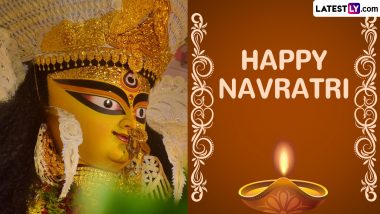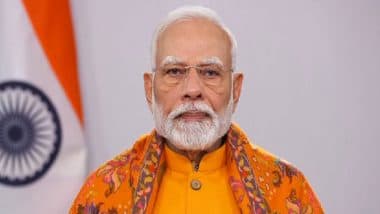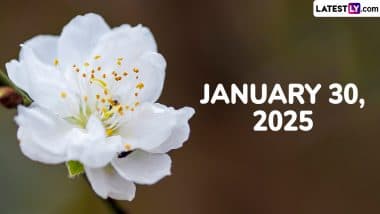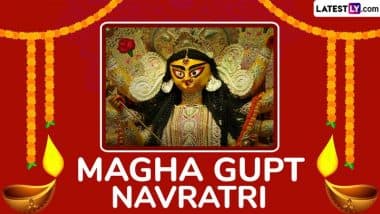Navratri, translating to "nine nights," is a vibrant Hindu festival celebrated twice each year, filled with enthusiasm and devotion. This nine-day event dedicates each day to a different form of Goddess Durga, collectively known as Navdurga. The most prominent Navratri occurs in October or November, referred to as Sharad Navratri, which signals the arrival of autumn. Sharad Navratri 2024 begins on October 3 and ends on October 11. Meanwhile, Chaitra Navratri was celebrated from April 9 to 17 this year. Across India, devotees engage in joyous celebrations that include fasting, dancing, and intricate rituals performed in both temples and homes. Sharad Navratri 2024 Full Calendar With Dates From Ghatasthapana to Dussehra: Check Date-Wise Schedule of Puja Days for Shardiya Navratri in October.
Key Differences Between Chaitra and Sharad Navratri
Chaitra Navratri, also known as Vasant Navratri, is a Hindu festival that occurs in the month of Chaitra, which usually falls in March or April. This festival marks the arrival of spring and symbolises rejuvenation, fertility, and new beginnings. While it shares the overarching theme of worshipping Goddess Durga, Chaitra Navratri has distinct cultural significance, culminating in Ram Navami, which celebrates the birth of Lord Rama and adds an additional layer of devotion to the festivities.
On the other hand, Sharad Navratri is more widely celebrated and occurs during the Ashwin month, typically in September or October. This version of Navratri commemorates the victory of Goddess Durga over the demon Mahishasura, culminating on the tenth day with Vijayadashami. This day also marks Lord Rama's triumph over Ravana and the rescue of Goddess Sita, linking the festival to significant mythological events.
One of the primary distinctions between the two Navratris lies in their seasonal context. Sharad Navratri aligns with the autumn season, symbolising harvest and abundance, while Chaitra Navratri corresponds with the onset of spring, representing renewal and growth. As a result, the rituals and customs associated with each Navratri reflect these seasonal influences.
Rituals and Cultural Variations
While both Navratris involve common practices such as fasting and prayer, they also feature unique cultural traditions. During Sharad Navratri, communities across India engage in the lively dances of Garba and Dandiya Raas, creating a festive atmosphere. In contrast, Chaitra Navratri may include special puja ceremonies dedicated to Goddess Durga or visits to sacred sites associated with her worship, often shaped by regional customs. Why Do Men Wear Sarees and Twirl for Sheri Garba at Ahmedabad’s Sadu Mata Ni Pol? Know the 200-Year-Old Tradition From Gujarat.
Another important aspect of these celebrations is their regional variations. Sharad Navratri is embraced with fervour throughout the country, while Chaitra Navratri holds particular significance in certain regions, especially in North India. In states like Uttar Pradesh and Uttarakhand, devotees flock to temples dedicated to Goddess Durga, seeking her blessings for a prosperous harvest and overall well-being.
Navratri is a multifaceted festival that beautifully encapsulates the diversity of Hindu traditions. Understanding the distinctions between Chaitra and Sharad Navratri enhances the appreciation of these vibrant celebrations, showcasing the rich cultural tapestry woven through shared devotion and varied practices. Whether it’s the joyous dances of Sharad Navratri or the spiritual rituals of Chaitra Navratri, each celebration reflects the profound reverence for the divine feminine.
(The above story first appeared on LatestLY on Oct 03, 2024 04:46 PM IST. For more news and updates on politics, world, sports, entertainment and lifestyle, log on to our website latestly.com).









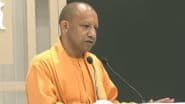



 Quickly
Quickly








